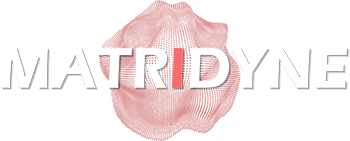Rethinking Utilization Management: A Starting Point for Meaningful Change
- James Quest
- No Comments

The recent shareholder push for UnitedHealth Group to evaluate its utilization management (UM) practices has sparked a vital discussion about how these processes affect patients, providers, and payers. While the proposal rightly emphasizes transparency and accountability, it also highlights a broader challenge for the healthcare industry: how to ensure UM delivers value without creating unnecessary barriers to care.
UM isn’t a new problem. It’s an issue the healthcare industry has been grappling with for decades. Despite its intended purpose of balancing cost management with evidence-based care, UM practices often draw criticism for creating delays, administrative burdens, and confusion. However, advancements in technology, particularly artificial intelligence (AI), and fresh perspectives on collaboration between stakeholders offer pathways to meaningful improvement—if we approach them thoughtfully.
What is Utilization Management, and Why Do We Need It?
At its core, UM serves a dual purpose: to ensure healthcare services are medically necessary and to control costs. It’s a tool payers use to manage the finite resources of a healthcare system, supporting evidence-based decision-making and preventing unnecessary or duplicative treatments.
UM’s value lies in its ability to improve care quality and efficiency. For example, prior authorization can prevent harmful or unproven procedures and guide patients toward the most effective treatment options. But its implementation often creates friction at critical points in the care process:
This duality—UM’s potential benefits versus its practical challenges—has long been a sticking point for the healthcare industry.
Challenges in Utilization Management
The challenges with UM go beyond administrative inefficiency, touching on systemic issues that have persisted for years. Among the most pressing:
- Delays in Care: The time required to secure prior authorizations can disrupt treatment timelines, creating stress for patients and providers.
- Complexity of Rules: Varying and intricate UM rules create a minefield for providers, making it difficult to navigate approval processes.
- Transparency Gaps: Patients and providers lack visibility into how UM decisions are made, fueling frustration and eroding trust.
- Administrative Overload: Manual UM processes consume significant time and resources for both payers and providers, leading to inefficiencies.
- Workforce Shortages: The U.S. is experiencing a shortage of clinical nurses, who are often vital to staffing UM departments. Some organizations are also hesitant to use offshore nurses, further straining resources.
- Slow Adoption of Advanced Technology: Many payers and providers lack modern platforms capable of fully leveraging AI technologies, slowing efforts to streamline UM practices.
- Incentive Limitations: Payer operations are shaped by rules established under the Affordable Care Act, which can sometimes limit the incentive to optimize UM processes beyond a certain point.
How Technology Can Reshape Utilization Management
The growing maturity of AI, particularly large language models (LLMs), offers a compelling opportunity to modernize UM. These tools can address some of the most persistent pain points, including administrative burdens and processing delays.
For example, companies like Alaffia Health have developed solutions that use AI to analyze medical policies, assess thousands of pages of medical records, and evaluate whether an authorization meets criteria for approval. If criteria aren’t met, these tools can identify precisely what’s missing, streamlining communication and reducing resubmissions. According to Alaffia’s data, these systems are delivering up to 20x improvements in processing times for facility claims.
While technology offers a clear path to incremental progress, its full potential is often limited by the slow adoption of advanced platforms on both the payer and provider sides. Addressing this gap will be critical to realizing the benefits of AI-driven UM solutions.
A Path Toward Incremental and Systemic Improvement
Incremental improvements can help alleviate the challenges of UM while the industry works toward larger systemic reforms. Key considerations include:
- Transparency and Collaboration:
Improving visibility into UM criteria and decision-making can reduce friction between patients, providers, and payers, fostering a more trusting and efficient system. - Pushing Rules Upstream:
Codifying UM rules and making them accessible to providers in real-time tools would allow pre-assessments before submitting requests, streamlining workflows and reducing denials. - Narrowing the Scope of Manual Review:
Automating routine cases would allow human resources to focus on complex or ambiguous situations, enhancing both efficiency and decision-making. - Incremental Progress Amid Larger Challenges:
AI-powered tools and better-defined UM rules are practical steps that can be implemented now, even as the industry debates more ambitious goals like universal UM standards. - Considering Universal Standards:
While industry-wide UM standards could bring consistency, achieving this will require significant collaboration across stakeholders and might eventually involve government intervention through entities like Health and Human Services.
Looking Ahead
UM practices have long been a source of contention in healthcare, but they also hold immense potential for improvement. By combining thoughtful collaboration, technological innovation, and a willingness to rethink entrenched processes, the industry can modernize UM in ways that benefit patients, providers, and payers alike.
This discussion is only the beginning. In future articles, we’ll dive deeper into specific UM processes, the role of technology in streamlining operations, and how patients, providers, and payers can align their priorities for a more effective system.
What do you see as the biggest barriers to improving UM? Are there particular advancements or approaches you believe hold the most promise? Share your thoughts and join the conversation as we explore this critical topic further.
